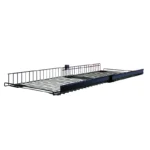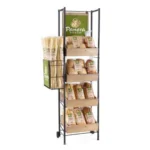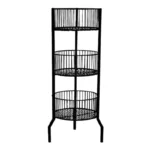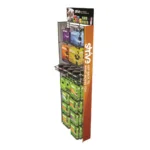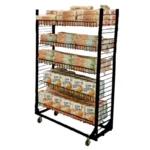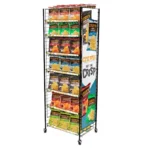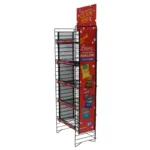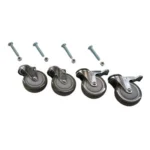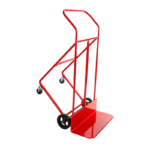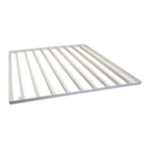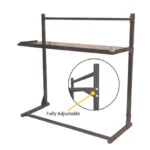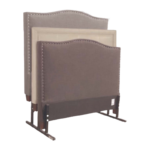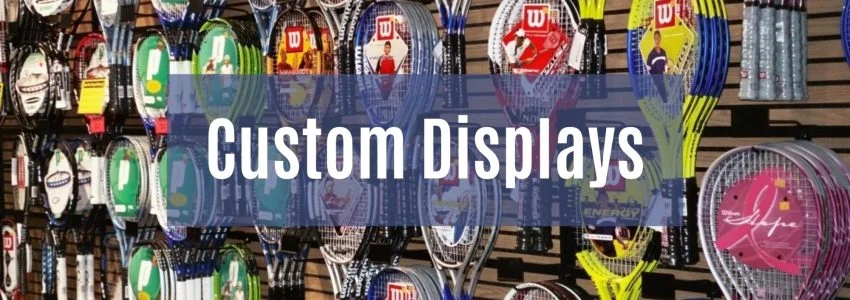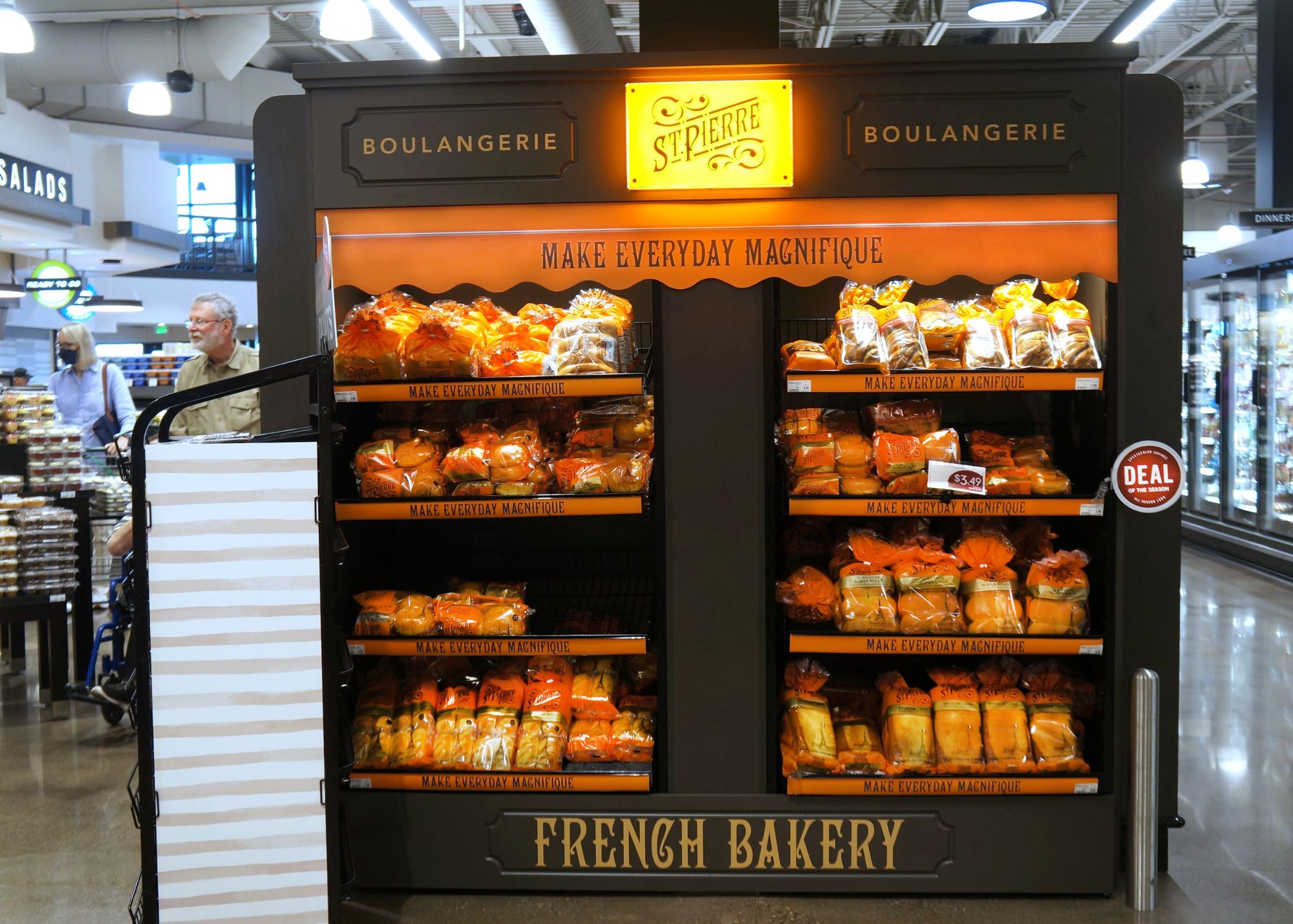Colgate instead of toothpaste. Frigidaire, not refrigerator. Kleenex or tissue? Google it!
These brand names have endured for so many generations that they’ve earned the generic names of consumer goods.
But how did they achieve such status?
Branding.
In the competitive world of retail, standing out from the crowd is essential for success. Those who develop a unique and memorable look and then consistently or even ubiquitously display it emerge victorious.
One powerful tool that can help brands, distributors, and private labels attain this is branded signage. On the facade, within the walls, and along the aisles of supermarkets offering dizzying arrays of options — it attracts customers like a magnet.
Let’s explore the magic of branded signage that influences shoppers to gravitate toward certain product displays.
Defining Branded Signage
Branded signage encompasses any visual communication tool that incorporates a company’s distinctive symbols, colors, and slogans. This broad category spans from imposing storefront signs that beckon from a distance to the subtle product tags that whisper brand narratives directly on the shelves.
Whether it’s an aisle marker guiding a shopper through their journey or a promotional banner unfurling the latest offer, each piece of branded signage is a crafted element of the overall brand experience. It’s designed not only to be seen but also to resonate with the consumer, reinforcing the brand’s message and ethos in a physical form.
In a retail environment where every interaction can tip the scales, these visual anchors serve to familiarize, reassure, and engage customers. They elevate the shopping experience from a transaction to a dialogue between the brand and the buyer.
Through strategic placement and design, branded signage bridges the gap between a brand’s promise and the consumer’s impression, turning spaces into storylines and visits into journeys.
The Critical Role of Branded Signage in Retail
“Signs are the most effective, yet least expensive, form of advertising for small businesses.” – U.S. Small Business Administration
Branded signage transcends mere decoration or guidance within the retail environment — it is a fundamental element in the silent conversation between consumers and brands. This dialogue is crucial as it shapes perceptions, influences decisions, and nurtures loyalty, all without a single word being spoken.
As shoppers navigate through aisles, it is the branded signage that subtly guides their expedition by highlighting key products, special offers, and brands’ identities. This non-verbal communication is powerful as it creates a visual landscape that can either invite engagement or deter interest.
Retail stores are a realm where choices abound, and competition is fierce. Here, the strategic use of branded signage becomes an indispensable ally for private label owners and distributors. Through this visual medium, brands have the opportunity to distinguish themselves, tell their story, and connect with consumers on a level above transactional.
This connection is what boosts the shopping experience from a mundane task to a curated journey, with every sign a touchpoint and every visual cue a step closer to conversion. In the bustling marketplace of retail, branded signage is more than seen. It is felt as a unique blend of art, strategy, and psychology that engages the consumer in a meaningful, memorable way.
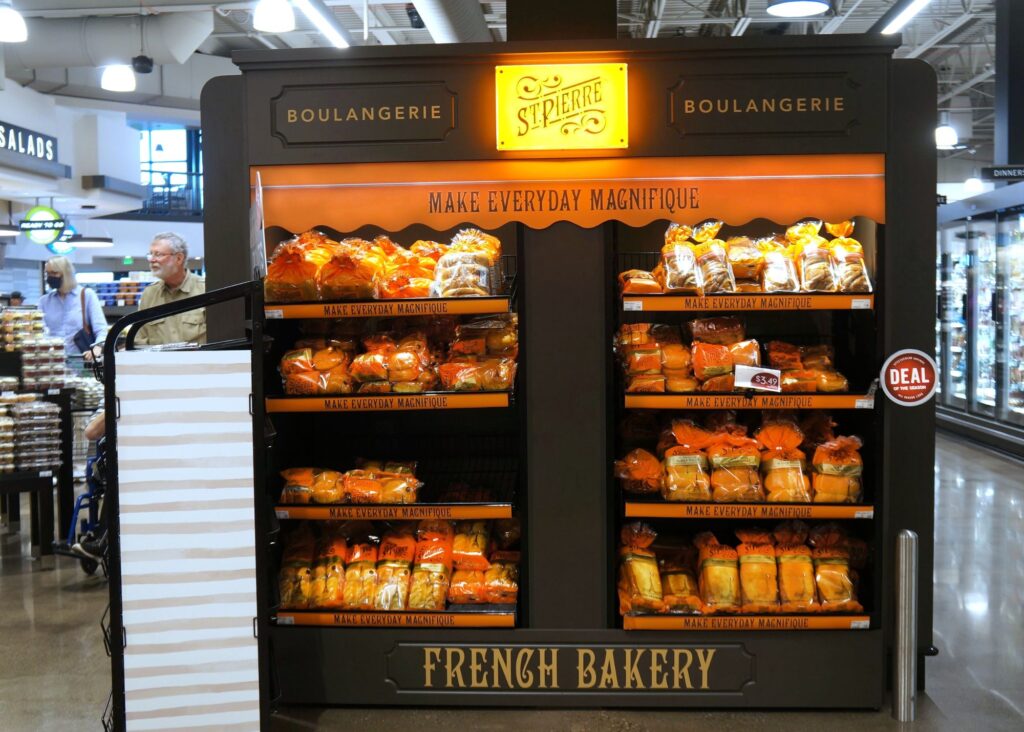
Branded Signage by the Numbers
As far as quantifiable impacts are concerned, branded signage emerges as a profound influencer of consumer behavior. Consider these intriguing data:
1. A FedEx Office study revealed that a staggering 76% of consumers were drawn into an unfamiliar store, captivated by its signage.
2. In the same study, 68% of shoppers associated the caliber of a store’s signage with the quality of its offerings.
3. The Sign Research Foundation found that 50% of new customers would patronize a business based on its signage.
4. Conversely, 54% drove by a business and didn’t notice it due to small or illegible signage, according to the Foundation’s study.
The U.S. Chamber of Commerce says 55% of first impressions are visual, and Global Banking and Finance states that 71% of consumers are more likely to buy a product if they recognize the brand.
These statistics are not mere numbers. They are testimonials that branded signage is not just an aesthetic addition but a potent visual communication. In the bustling aisles of retail, where every product vies for attention, its strategic deployment is a decisive factor in consumer choices, and ultimately, in impacting a brand’s footprint.
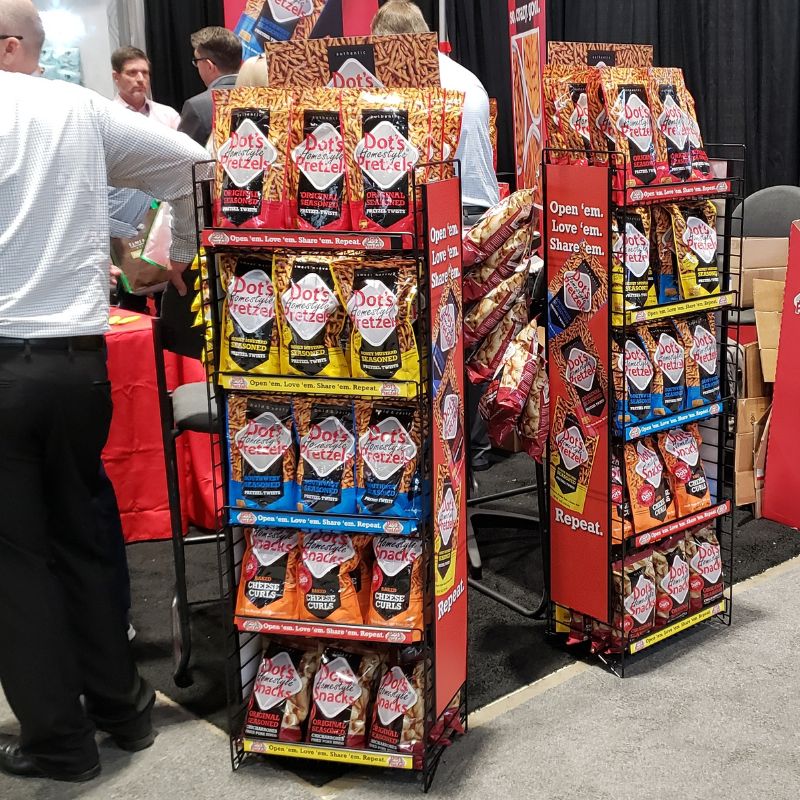
Next Steps for Retail Distributors and Brand Owners
Business trends show a 20% uptick in overall growth when branding is consistent, and those who work on it enjoy 33% higher revenue.
For brands, distributors, and private labels poised to refine their retail spaces with the strategic use of branded signage, they must craft a well-considered approach:
Step 1: Begin with a comprehensive review of your current signage landscape.
This foundational step is crucial in identifying areas where your visual communication may lack coherence or impact. It also guarantees every piece of signage contributes effectively to your brand’s narrative.
Step 2: Commit to quality in both materials and design.
These elements are the cornerstone of creating an inviting atmosphere that draws the eye and withstands the test of time. Both reflect the enduring nature of your brand. Invest in personalizing them, and you win the hearts of 80% of consumers who will pledge their allegiance and spread the word.
Step 3: Recognize that the dynamic retail environment demands agility.
Regular updates to your signage ensure your messaging remains fresh, relevant, and engaging, and keeps pace with evolving consumer interests and market trends.
Make them fall in love with your brand story, and 15% will purchase your product right away, while 55% will seriously consider it in the future. As a bonus, 44% will even share your story.
Step 4: Embrace the continual process of evaluation and renewal.
Seize the opportunity to innovate and excite. Foster a retail space that resonates with today’s consumer while anticipating the needs of tomorrow’s. This forward-thinking approach will not only amplify your brand’s presence but will also deepen the connection with your audience, turning casual browsers into loyal customers.
The time and effort you put in will be worth it. Believe it or not, 60% of consumers will choose your brand over your competition even if your pricing is higher.
Step 5: Partner with a trusted brand signage provider.
Expertise, a wide range of offerings, and competitive pricing are the three key attributes of a good brand signage company. And when you’re vetting candidates, ensure they’re able to produce custom signs that will fit your display structures.



